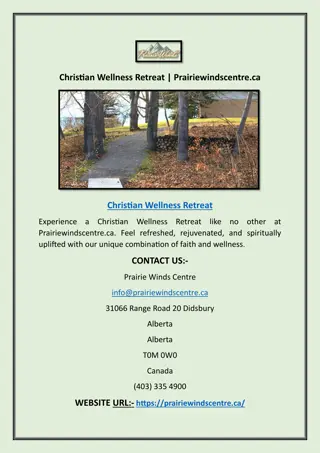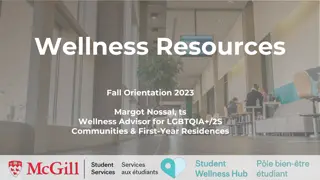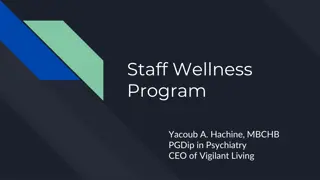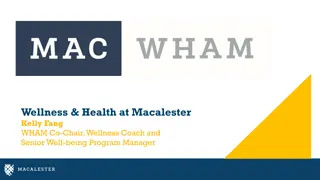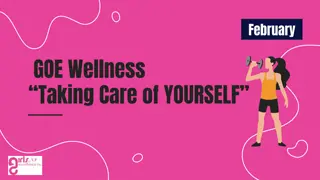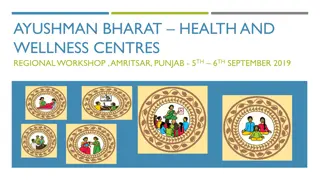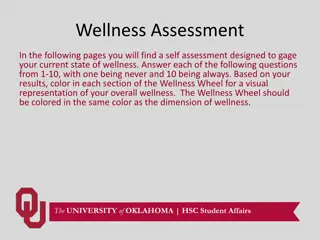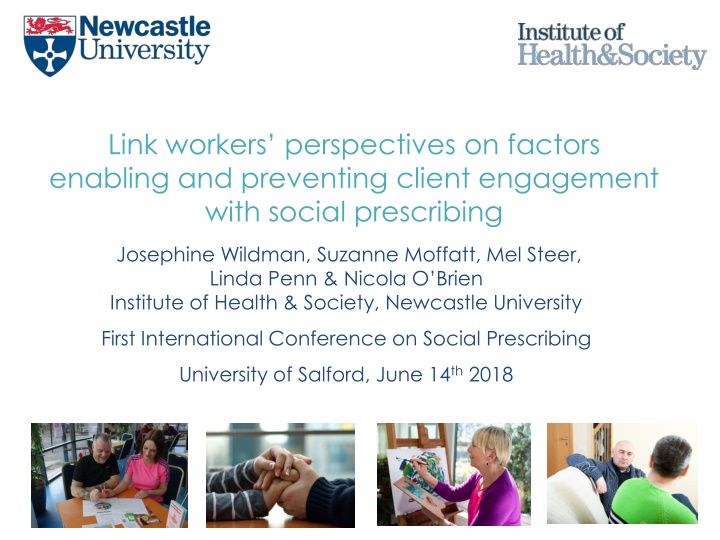
Factors Enabling & Preventing Client Engagement in Social Prescribing
Explore the perceptions of link workers on factors enabling and preventing client engagement in a social prescribing scheme. This study delves into the experiences and insights of link workers at Ways to Wellness in Newcastle, shedding light on crucial aspects of client engagement. Gain valuable insights from the perspectives of those at the forefront of social prescribing interventions.
Download Presentation

Please find below an Image/Link to download the presentation.
The content on the website is provided AS IS for your information and personal use only. It may not be sold, licensed, or shared on other websites without obtaining consent from the author. If you encounter any issues during the download, it is possible that the publisher has removed the file from their server.
You are allowed to download the files provided on this website for personal or commercial use, subject to the condition that they are used lawfully. All files are the property of their respective owners.
The content on the website is provided AS IS for your information and personal use only. It may not be sold, licensed, or shared on other websites without obtaining consent from the author.
E N D
Presentation Transcript
Link workers perspectives on factors enabling and preventing client engagement with social prescribing Josephine Wildman, Suzanne Moffatt, Mel Steer, Linda Penn & Nicola O Brien Institute of Health & Society, Newcastle University First International Conference on Social Prescribing University of Salford, June 14th 2018
Todays presentation The link worker has arguably the most important role in social prescribing (Social Prescribing Network, 2016) Ways to Wellness link worker social prescribing intervention Link worker perspective on delivering social prescribing Findings on factors enabling and preventing client engagement Conclusions
Ways to Wellness Ways to Wellness has been delivering link worker social prescribing since April 2015 Located in west Newcastle upon Tyne Ethnically diverse inner-city area (population n=132,000) Ranks among 40 most deprived areas in England 17 General Practices referring into the service
Ways to Wellness Referral Criteria Long-term condition (LTC): COPD, Asthma, Diabetes (Type 1 or 2), Coronary Heart Disease, Heart Failure, Epilepsy, Osteoporosis 40 to 74 years of age Further prioritised referral criteria: social isolation poor understanding of condition, frequent attender at GP or hospital, poor adherence to prescription anxiety or depression (in addition to one of the above LTCs) poor health but with scope to improve with lifestyle change poor English literacy obese or inactive
Intervention Link worker works 1:1 with patients for up to 2 years Initial appointment involves identifying personalised, achievable goals for LTC management and behaviour change Clients referred to community groups and services (e.g. weight-management, welfare rights advice, arts-based activities)
Aim of this study The aim of this study is to explore link workers perceptions of the factors enabling and preventing client engagement in a social prescribing scheme
Qualitative research with link workers Two phases: Phase 1 (June to September 2015): all link workers and senior link workers invited to take part in focus groups (n=5) and individual interviews (n=15) Phase 2 (August 2016): Focus groups (n=4) comprising new appointees and established link workers (n=15)
Findings Factors enabling engagement
Holistic service Participant 3: You re going from benefits, to housing, to health, to family relationships Participant 4: to bereavement, suicide and mental health Participant 3: to domestic violence, drugs and alcohol. You name it and we ve probably done it in this room. (Follow-up FG4)
Holistic service Link worker is not describing what you do (Initial FG, P4) [We are] support workers more than link workers I think you find when you go in with a client and they ve got massive problems, like they ve got no money for food, you can t just say, Do you fancy going to the gym? We have to look at the problem that s affecting them at the moment (Follow-up FG4)
Time and continuity a lot of our job is just giving people time [a link worker is the] linchpin the person they come back to I think it s knowing that they ve got that support along the way in whatever happens for them I think it is one of the massive selling points to this [intervention] is the longer time that you can work with someone and that you can support them through the journey. (Follow-up FG2)
Findings Barriers to engaging clients
Referral challenges Initially, referral rates were lower than required Barriers to primary care referrals: Considerable variation in levels of primary-care practice engagement High primary care work loads Uncertainty over whom to refer Frustration with referral criteria
Referral challenges New challenges at follow-up: Is the money more important or are the people more important? We re seeing the numbers increase massively, which is great . I m detached because I know I haven t got that capacity to get to know [clients] and you can end up cracking up yourself because you re mentally exhausted (Follow-up FG4)
Training it being an off-the-shelf training was it the right one? (Initial FG5) you re not talking about Sally who lives in a flat where the room s caving in, she s got no money and she s got loads of family. You re not actually talking about real poverty, which is what we deal with on a daily basis (Follow-up FG4)
Training Bespoke qualification: Focus on wider determinants of health In-depth mental health training Training on specific LTCs Communitydevelopment training
Onward referral challenges amassive barrier is other services capacities (Interview P1)
Onward referral challenges if you re in [GP Surgery] there s nothing people need to bear in mind that we work in poverty areas. The council have no money to put into these poverty areas so all the activities and services are few and far between now. So what was there to initially grab onto, when we first started the service, is slowly dwindling away as well. Sometimes you feel like you re fighting a losing battle. (Follow-up FG4)
Conclusions/reflections Link workers are central to Ways to Wellness , demonstrating reflective practice, willingness to learn and share their learning and a commitment to a role they performed with skill and dedication
Conclusions/reflections On-the-ground link worker social prescribing requires an holistic service with the time, space and knowledge to offer intensive yet non-directive support and, if necessary, advocacy Good quality relationships vital for client engagement Complex and demanding professional role Training and career progression Adequately funded community and voluntary sector is essential
Acknowledgements: Tara Case, Aime Callan from Ways to Wellness Mental Health Concern First Contact Clinical HealthWorks Changing Lives Email: josephine.wildman@ncl.ac.uk Suzanne.Moffatt@ncl.ac.uk







